Stir-fried shredded pork, or “chǎo ròu sī” in Chinese cuisine, is a beloved dish celebrated for its tender texture, savory flavor, and adaptability. While the star of the show is undeniably the pork, the true magic lies in the artful pairing of side dishes that elevate the meal from ordinary to extraordinary. These accompaniments not only add depth to the dish but also balance flavors, textures, and nutritional profiles. In this comprehensive guide, we delve into the world of side dishes that complement stir-fried shredded pork, offering insights into traditional favorites, innovative combinations, and the culinary principles that make them work.
The Foundation of Stir-Fried Shredded Pork
Before diving into side dishes, it’s essential to understand the basics of stir-fried shredded pork. The dish typically uses tender cuts of pork, such as tenderloin or shoulder, sliced into thin strips. Marinated in a mixture of soy sauce, rice wine, cornstarch, and sometimes a touch of sugar, the pork is stir-fried quickly over high heat to retain its juiciness. The result is a dish with a umami-rich base that pairs beautifully with a variety of ingredients.

The key to a great stir-fried shredded pork dish is balance. The pork’s richness is often offset by fresh, crisp, or aromatic side dishes that cut through the fat and add layers of flavor. Whether you prefer a mild, comforting meal or a bold, spicy feast, the right side dishes can transform your plate.
Vegetables: The Backbone of Flavor and Texture
Vegetables are the most common and versatile side dishes for stir-fried shredded pork. They contribute freshness, color, and a satisfying crunch while often adding nutritional value. Here’s a breakdown of vegetables that pair exceptionally well:
-
Bell Peppers (Red, Green, or Yellow)
- Why They Work: Bell peppers add a sweet, mild crunch and vibrant color. Their natural sugars caramelize slightly when stir-fried, enhancing the dish’s depth.
- Culinary Tip: Use a mix of colors for visual appeal. Slice them into thin strips to match the pork’s texture.
-
Carrots
- Why They Work: Carrots offer a subtle sweetness and a crisp texture that contrasts with the tender pork. They also add a pop of orange hue.
- Culinary Tip: Julienne the carrots for even cooking and a delicate presentation.
-
Bamboo Shoots
- Why They Work: Fresh or canned bamboo shoots provide a unique, slightly earthy flavor and a crisp bite. They are a staple in Chinese stir-fries.
- Culinary Tip: Blanch canned bamboo shoots before use to remove any metallic taste.
-
Wood Ear Mushrooms
- Why They Work: These slippery, chewy mushrooms add a fun texture and absorb the dish’s flavors beautifully.
- Culinary Tip: Rehydrate dried wood ear mushrooms in warm water before slicing.
-
Celery
- Why They Work: Celery’s crispness and mild bitterness cut through the richness of the pork. It also adds a refreshing aroma.
- Culinary Tip: Slice celery diagonally for an elegant look and quick cooking.
-
Snow Peas or Sugar Snap Peas
- Why They Work: These peas offer a bright, grassy sweetness and a satisfying snap. They cook quickly, retaining their vibrant green color.
- Culinary Tip: Stir-fry briefly to maintain their crunch.
-
Onions (White or Scallions)
- Why They Work: Onions add a pungent sweetness when caramelized. Scallions, on the other hand, provide a fresh, aromatic kick.
- Culinary Tip: Use white onions for depth or scallions as a garnish for a finishing touch.
-
Mushrooms (Shiitake, Oyster, or Button)
- Why They Work: Mushrooms bring umami and a meaty texture. Shiitake, in particular, adds a robust, earthy flavor.
- Culinary Tip: Slice mushrooms thinly for even cooking and maximum flavor absorption.
-
Zucchini or Cucumber
- Why They Work: Zucchini adds a mild, watery sweetness, while cucumber offers a cooling crunch. Both are excellent for lighter meals.
- Culinary Tip: Salt zucchini slices beforehand to remove excess moisture.
-
Water Chestnuts
- Why They Work: These add a delightful crunch and a subtle, nutty sweetness. They are a classic addition in Cantonese-style stir-fries.
- Culinary Tip: Use canned water chestnuts for convenience; rinse before use.
Fungi and Dried Ingredients: Umami Bombs
Fungi and dried ingredients like mushrooms, lily buds, and cloud ears introduce layers of umami and unique textures.
-
Dried Shiitake Mushrooms
- Why They Work: Rehydrated shiitake mushrooms have a concentrated, meaty flavor that complements the pork’s richness.
- Culinary Tip: Soak them in hot water until soft, then slice and stir-fry.
-
Lily Buds (Golden Needles)
- Why They Work: These dried flowers add a delicate, floral aroma and a slight chewiness.
- Culinary Tip: Trim the hard ends before rehydrating.
-
Cloud Ear Fungi
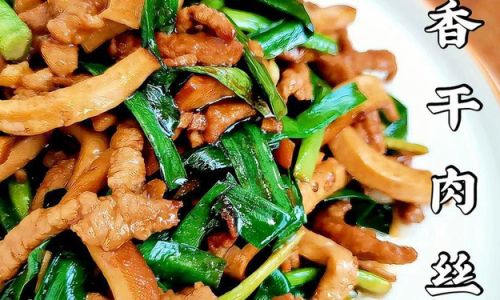
- Why They Work: Also known as “black fungus,” these have a gelatinous texture and a mild, earthy taste.
- Culinary Tip: Soak in warm water until pliable, then tear into smaller pieces.
Tofu and Soy Products: Protein-Packed Additions
Tofu and soy-based ingredients add plant-based protein and absorb flavors beautifully.
-
Soft Tofu
- Why It Works: Silken tofu adds a creamy contrast to the crisp pork. It’s best used in soups or light stir-fries.
- Culinary Tip: Add tofu toward the end of cooking to prevent breaking.
-
Fried Tofu Puffs
- Why They Work: These absorb the sauce’s flavors while providing a meaty, chewy texture.
- Culinary Tip: Squeeze out excess oil before adding to the stir-fry.
-
Fermented Black Beans
- Why They Work: These salty, pungent beans add a savory punch. They’re often mashed with garlic and ginger.
- Culinary Tip: Rinse lightly to reduce saltiness before using.
Eggs and Dairy: Creamy Accents
Eggs and dairy offer richness and a velvety texture.
-
Scrambled Eggs
- Why They Work: Soft scrambled eggs add a luxurious element. They’re often stirred in at the end.
- Culinary Tip: Cook eggs gently to avoid overcooking; fold into the pork mixture.
-
Cheese (Parmesan or Cheddar)
- Why It Works: While unconventional, a sprinkle of sharp cheese can add a salty, nutty kick.
- Culinary Tip: Use sparingly; best suited for fusion dishes.
Starches and Grains: Hearty Companions
Starches balance the dish’s flavors and provide substance.
-
Steamed Rice
- Why It Works: The classic pairing. Rice absorbs the sauce and tempers the dish’s spiciness.
- Culinary Tip: Use jasmine or basmati rice for fragrant results.
-
Noodles (Egg, Rice, or Udon)
- Why They Work: Stir-fried noodles, like chow mein, turn the dish into a hearty one-bowl meal.
- Culinary Tip: Toss noodles with the pork and vegetables for even flavor distribution.
-
Fried Rice
- Why It Works: Leftover rice fried with eggs, vegetables, and pork creates a satisfying, textural feast.
- Culinary Tip: Use day-old rice for the best texture.
Nuts and Seeds: Crunchy Toppings
Nuts and seeds add texture and nutty richness.
-
Toasted Sesame Seeds
- Why They Work: A garnish that adds a nutty aroma and a subtle crunch.
- Culinary Tip: Dry-toast seeds in a pan until golden before sprinkling.
-
Cashews or Peanuts
- Why They Work: Roasted nuts provide a buttery crunch. Peanuts are common in Sichuan-style dishes.
- Culinary Tip: Add nuts toward the end of cooking to retain their crunch.
Herbs and Aromatics: Fragrant Finishers
Fresh herbs and aromatics brighten the dish.
-
Cilantro

- Why It Works: Its citrusy, herbaceous flavor cuts through richness.
- Culinary Tip: Chop roughly and sprinkle just before serving.
-
Basil (Thai or Holy Basil)
- Why It Works: Basil adds an anise-like sweetness and aroma, especially in spicy stir-fries.
- Culinary Tip: Tear leaves instead of chopping to release more flavor.
-
Garlic Chives
- Why They Work: Their mild garlic flavor and tender stems add a delicate onion note.
- Culinary Tip: Cut into 2-inch segments for easy stir-frying.
Spicy Additions: For Heat Seekers
For those who crave heat, these ingredients add fiery depth.
-
Dried Red Chilies
- Why They Work: Whole or crushed, they impart a smoky spiciness.
- Culinary Tip: Remove seeds for less heat; toast briefly before using.
-
Sichuan Peppercorns
- Why They Work: These add a numbing, tingly sensation that elevates the dish’s complexity.
- Culinary Tip: Toast and grind before adding to the marinade or sauce.
-
Fresh Chilies (Jalapeño or Serrano)
- Why They Work: Their bright heat complements the pork’s savory notes.
- Culinary Tip: Slice thinly and add early in cooking to mellow the spice.
Regional Variations: Exploring Global Influences
Stir-fried shredded pork transcends borders, with each region adding its twist.
-
Korean-Inspired: Gochujang Pork with Kimchi
- Pairing: Add kimchi and gochujang (fermented chili paste) for a spicy, tangy kick.
- Culinary Tip: Marinate pork in gochujang before stir-frying.
-
Thai-Inspired: Basil Pork with Holy Basil
- Pairing: Combine pork with holy basil, fish sauce, and lime for a fragrant, zesty dish.
- Culinary Tip: Use a wok to achieve smoky flavors.
-
Mexican-Inspired: Pork with Roasted Poblanos and Corn
- Pairing: Serve with charred poblanos, sweet corn, and a squeeze of lime.
- Culinary Tip: Grill vegetables for added smokiness.
Balancing Act: Flavor and Texture
The key to a perfect stir-fried shredded pork dish lies in balancing flavors and textures. Here’s how:
- Sweet vs. Savory: Offset the pork’s richness with sweet vegetables like carrots or bell peppers.
- Crunch vs. Tenderness: Pair soft pork with crisp water chestnuts or celery.
- Aromatics: Use ginger, garlic, and scallions to build layers of flavor.
- Color: Aim for a rainbow of hues to make the dish visually appealing.
Tips for Perfecting Your Dish
- Marinate the Pork: A simple marinade of soy sauce, rice wine, and cornstarch ensures tender, flavorful meat.
- High Heat, Quick Cooking: Stir-fry over high heat to seal in juices and prevent sogginess.
- Prep Ahead: Slice all ingredients beforehand to streamline cooking.
- Adjust Seasoning: Taste and adjust salt, sugar, or vinegar as needed.
Conclusion: The Joy of Experimentation
Stir-fried shredded pork is a canvas for creativity. Whether you stick to traditional pairings like bamboo shoots and wood ear mushrooms or venture into global flavors with kimchi or basil, the possibilities are endless. The next time you cook this dish, consider the interplay of flavors, textures, and colors—and don’t be afraid to experiment. After all, the best meals are those made with curiosity and a dash of adventure.
This guide equips you with the knowledge to elevate your stir-fried shredded pork game. From crisp vegetables to umami-rich fungi and spicy chilis, the right side dishes turn a simple meal into a culinary masterpiece. So grab your wok, sharpen your knife, and let your taste buds guide you!
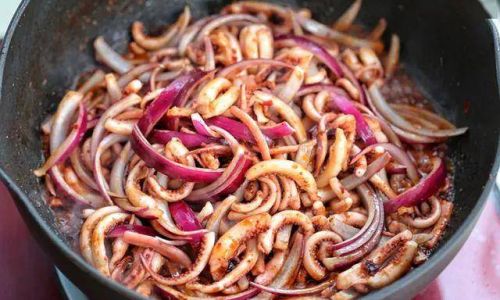
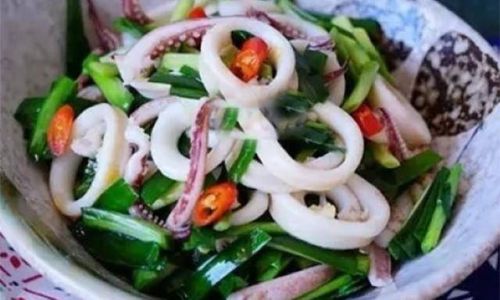
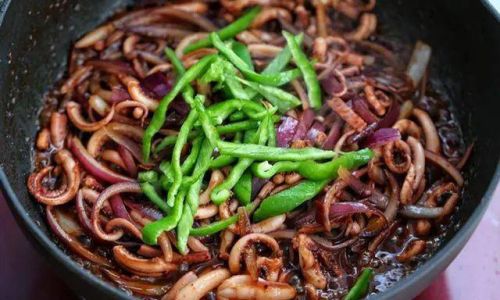
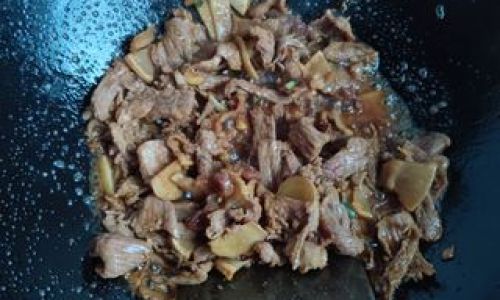

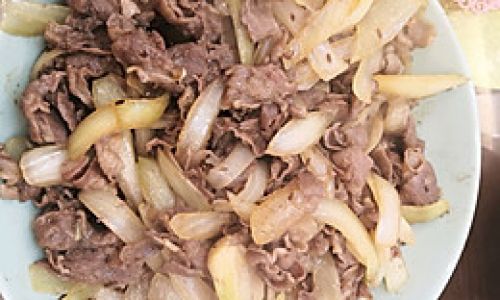
0 comments